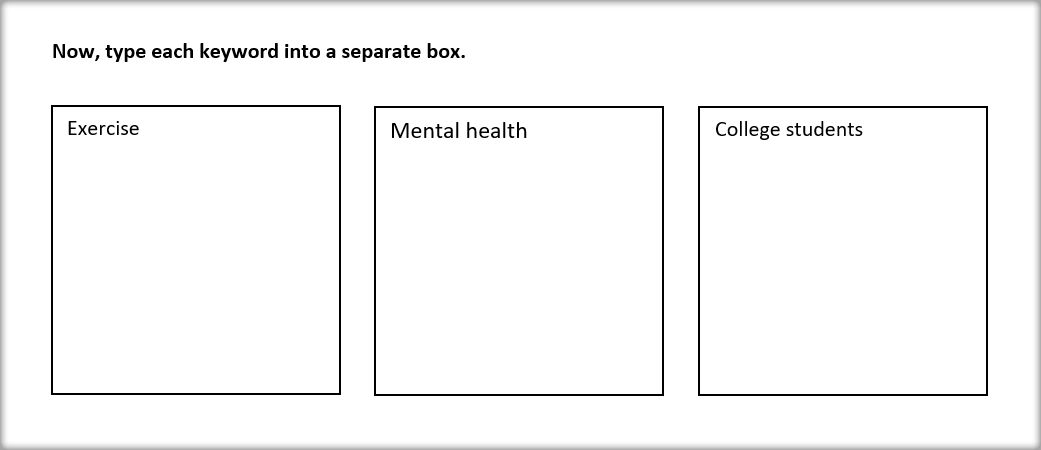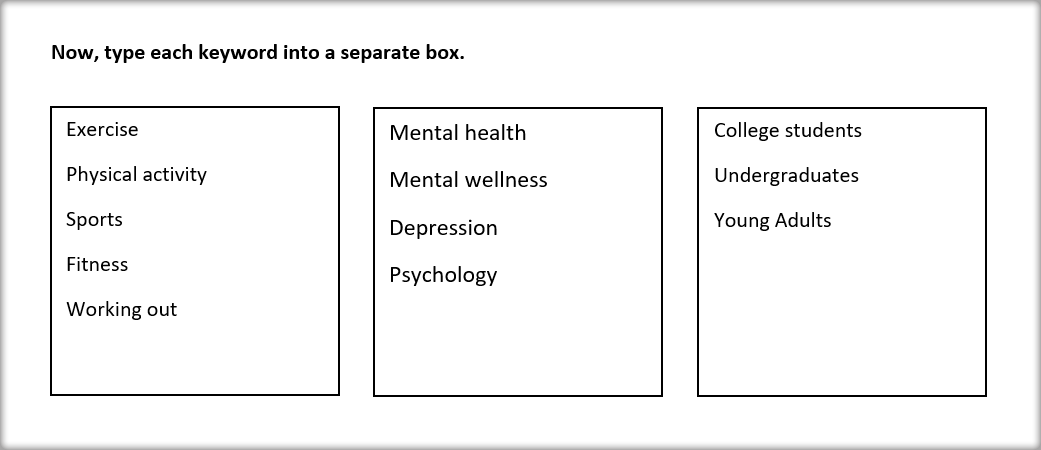Getting Started with Research
This part is designed to help you brainstorm search terms (or keywords) and develop search strategies to begin your research. It is a form of concept mapping – or mind mapping – which is a process for visualizing ideas and making connections between them.
We will use a modified process of concept mapping to focus on developing search strategies.
Make sure you have accessed and made a copy of the lesson worksheet to help guide your exploration. Instructions for the worksheet, along with an example, are provided below.
First, type your research question or thesis into the box at the top of the page.

Next, highlight or change the text color of the most important words or phrases in your question. Each should be only 1-2 words long. These are your keywords. Focus on the most unique words, and ignore common words like the, on, effect, what, who, etc. Try to identify at least 2-3 keywords for your question.

Now, type each keyword into a separate box.

Finally, list alternative words or phrases for each keyword underneath it in the corresponding box. Think about direct synonyms (i.e., physical activity for exercise) and words that may make your search broader (i.e., psychology for mental health) or narrower (i.e., undergraduates for college students).

When you are finished with your concept map, move on to the next section.

